Visiting churches, and monasteries, and enjoying nature and dining are highlights when traveling to Armenia. However, those who are into history will find more valuable things to see. The country’s archeological sites may be less popular than Lake Sevan or the Geghard Monastery but not less attractive.
Armenia is home to some of the most ancient ruins and artifacts providing a glimpse into early civilizations. Not everyone might find old ruins exciting. But for true history enthusiasts, there is a unique chance to walk through places that date back thousands of years. This blog will present some of the archeological sites in Armenia to enrich your knowledge of history.
Why is Armenia Important to Archaeology?
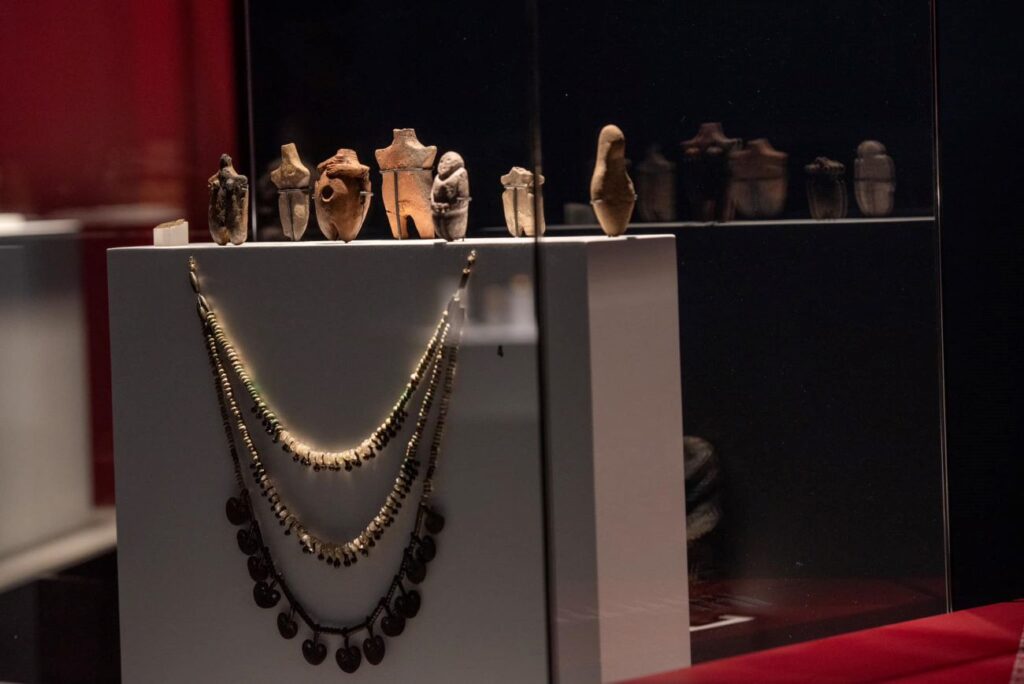
Armenia holds immense importance in the field of archaeology. A simple Google search will show how the secrets of old civilizations are uncovered in this small country. For example, the latest reports show 30,000 relics were discovered during excavation at a 6,000-year-old tomb in Yeghegis. Another fresh example is the finding of the oldest known Christian church in Armenia discovered by researchers from the University of Münster and the National Academy of Sciences of Armenia.
Ancient settlements, prehistoric caves, and early metalworking techniques – all these are the results of excavations in Armenia. Moreover, archaeological research by local and international teams has greatly advanced our understanding of ancient societies, from early agriculture to the spread of Christianity.
What is the oldest site in Armenia?
Determining the oldest site in Armenia is challenging due to the variety of prehistoric and Bronze Age discoveries.
Some of the earliest sites date back to the Paleolithic and Neolithic periods. The pieces from these sites are on display at the History Museum of Armenia, one of the places that all archeology lovers have to visit.
One notable location is Areni-1 Cave, where evidence of the world’s oldest winery was found, dating to around 6,000 BC. Other significant sites include ancient monuments like Karahunj (or Carahunge), a megalithic complex, or Metsamor where the excavation works continue. The latest find was a tomb filled with gold pieces and more than a hundred amber and carnelian beads dating to the late Bronze Age.
Let’s explore a mix of both popular and lesser-known but equally fascinating archaeological sites.
Areni
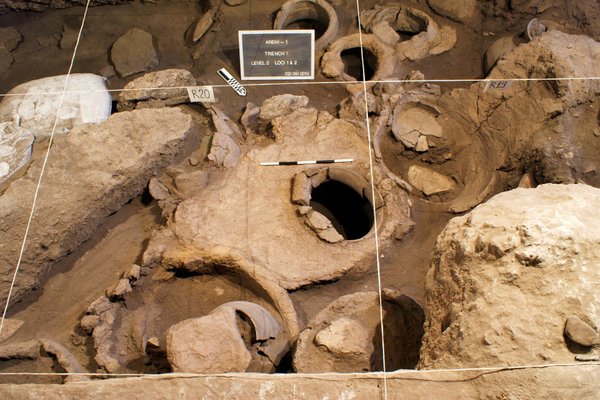
Areni-1 Cave is a must-visit for archaeology lovers — no better place than to explore ancient history. Located about 12 km from Yeghegnadzor in Vayots Dzor province, the site is famous for its incredible discoveries. They include one of the world’s oldest known wineries dating back over 6,100 years. Archaeologists unearthed wine presses, storage vessels, and drinking cups, painting a vivid picture of early winemaking. Also found here is a 5,500-year-old leather shoe, the oldest of its kind, remarkably preserved in the cave’s dry environment.
Metsamor Museum and Site
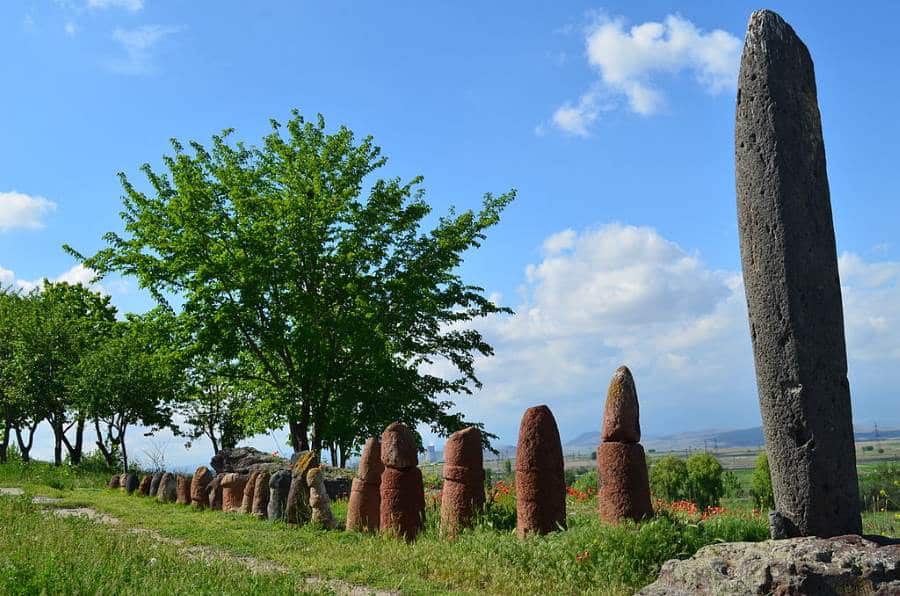
Discovered in the 1960s, the Metsamor site has yielded numerous artifacts, including pottery, jewelry, tools, and metalwork. These pieces are displayed at the museum alongside the ruins. The site is particularly popular for its advanced metal tools. There are examples of bronze and iron tools and weapons that showcase Metsamor’s significant role in regional metallurgy.
Excavations have revealed that the settlement thrived as a major urban center during the late Bronze Age (4th-3rd millennia BC). Recent discoveries include additional metallurgical workshops and evidence of Metsamor’s importance in early urbanization. A joint team of Armenian and Polish researchers have recently uncovered a grave of two people, probably a couple. The tomb contained gold pendants and over a hundred beads.
Agarak
This site is located just a 30-minute drive from Yerevan and takes us back to the early Bronze Age. It’s a big site spanning around 200 hectares, with recent excavations revealing an impressive range of artifacts. Among the finds are ceramic fragments, Urartian burials, and ritual sites.
Agarak flourished as an urban center in the 4th century BC due to its strategic location along the trade route. Visitors can explore early man-made structures carved into stone, such as rock walls, stairways, and horseshoe-shaped structures, which date to around 3400 BC. The site also features a unique street plan and thick walls made of sun-dried mud bricks.
Carahunge
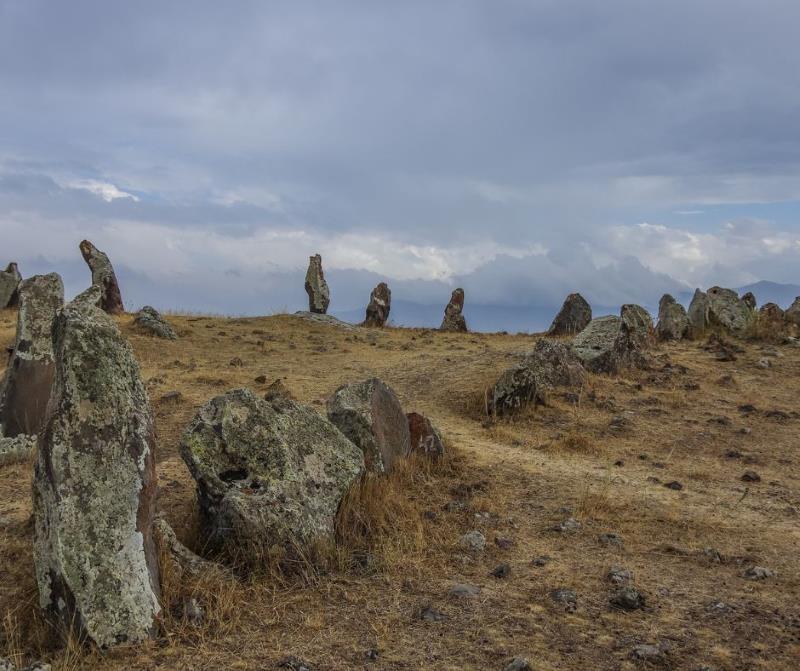
This site often labeled as “Armenian Stonehenge,” is an ancient megalithic site in Syunik province. Estimated to be around 7,500 years old, the site consists of large upright stones arranged in a circular formation. Some stones feature holes, believed to have served astronomical purposes. This suggests that Carahunge may have been an ancient observatory, possibly used to track the movements of celestial bodies.
However, the researchers do not have a common opinion of the origins of the site. There were some animal remains indicating that Carahunge also held ritual significance. Archaeologists have identified over 200 stones at the site.
Hartashen
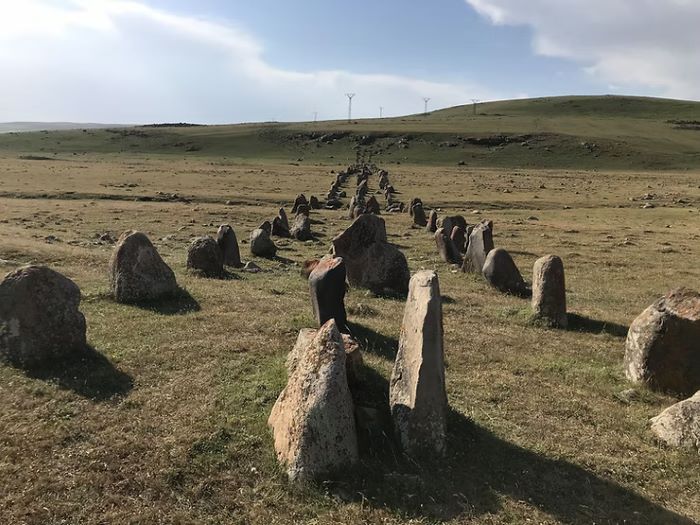
Photo credit: Carahunge.org
Hartashen, unlike the more famous Carahunge, is a lesser-known but equally mysterious megalithic site. This monument consists of two rows of large basalt stones arranged at angles to each other and stretching for 450 and 300 meters. It is believed to be between 6,000 and 8,000 years old and the exact purpose of the stones is unknown.
The options vary from a ceremonial pathway to an ancient observatory, or something else entirely. Despite its intriguing features, Hartashen has largely escaped the spotlight, with few excavations or studies conducted to fully understand its purpose.
Karashamb
Karashamb is a remarkable Bronze Age archaeological site that stands out for its size and significance. The site is home to over 700 tombs, dating from the 20th to the 7th centuries BC, making it one of the largest burial sites in the country.
What makes Karashamb especially unique is the mix of human and animal burials. The tombs are accompanied by a variety of artifacts, including pottery and tools. This especially helped archaeologists piece together the lifestyle of the people who lived here.
